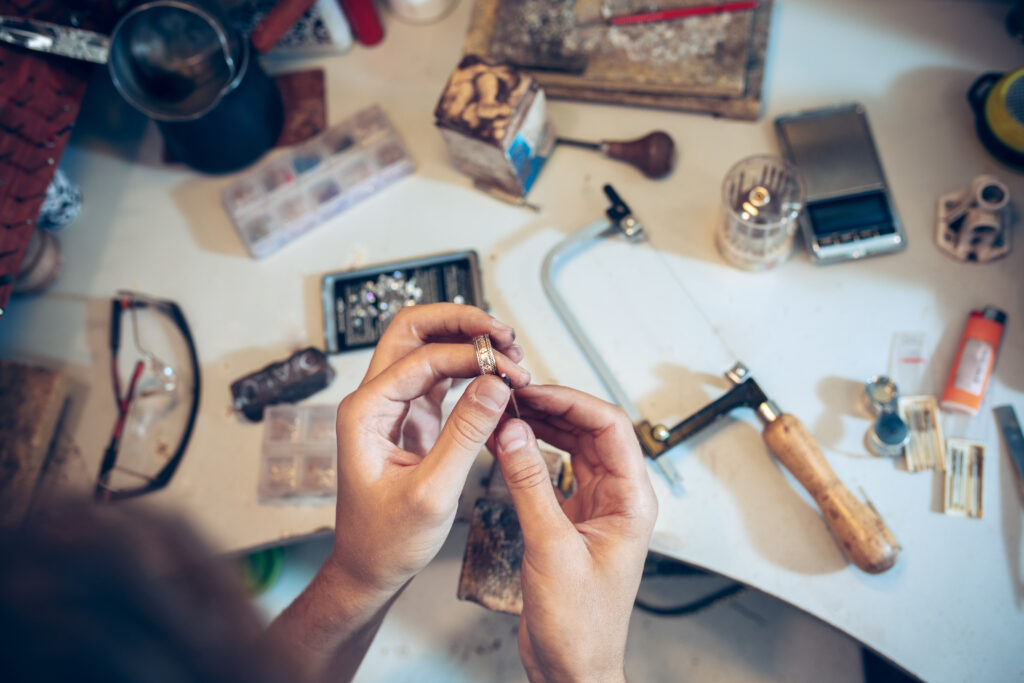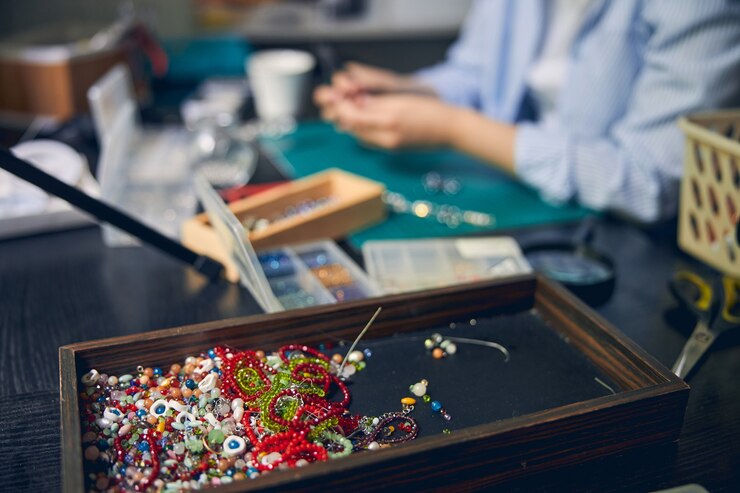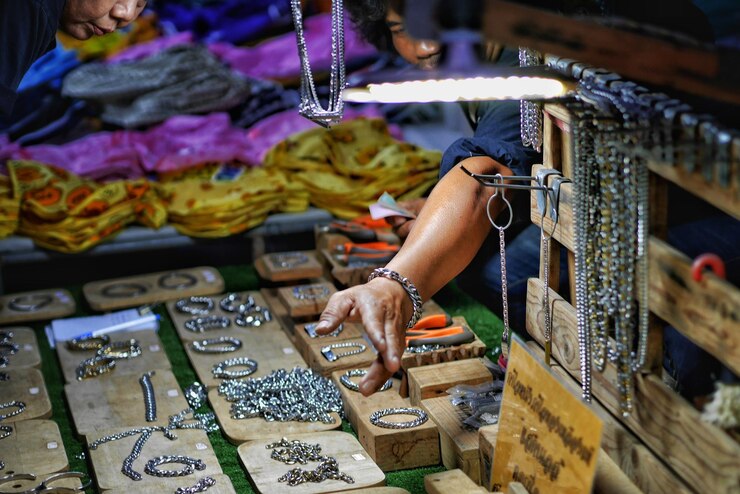
image credit: Freepik
In the world of jewelry manufacturing, timing is everything. Be it seasonal demand, launching a new collection, or customized orders, understanding manufacturing timelines ensures the product will be in hand and ready to go out the door, important for running smooth operations and happy customers. For a supply chain manager, mastering this dance between efficiency and precision would be the difference between seeing the light at the end of the tunnel or delayed and costly delays.
So if you are looking to manage all that complicated detail over your jewelry factory production lead times, this is the guide you should go with. Let’s explore the several elements of manufacturing timelines, hints as to how to handle them, and how Maker’s Row can make sourcing and planning easy for you.
What are manufacturing timelines?
Manufacturing timelines in jewelry mean how long it takes an idea conceived through the process of taking a long cycle of conception to completion to transfer an idea into an item, basically. Generally, those items usually comprise design; sourcing metals, gemstones, and findings; casting; assembly, polish, and finishes; and, above all, quality control. Ensure that every single piece produced is to standards or conditions desired.
Knowledge of these phases and how they interlock allows the supply chain manager to predict and, therefore, mitigate potential bottlenecks.
Factors Determining Production Lead Times for Jewelry Manufacturers
Every project is unique, and several factors can impact the length of a cycle to complete production. The most significant ones are the following:
- Design Complexity
This also pertains to timelines: the complexity of design—simple, with fewer components, would only take days to produce, but custom and complicated pieces may take weeks to come by.
- Material Availability
Lead time may drag if the materials needed are not easily available. Examples would be rare gemstones or special metals, which may call for some time to obtain.
- Production Capability
The size and capacity of a jewelry factory also determine lead time. Sometimes, small-sized factories take longer lead times, especially during holidays, since they may lack equipment or personnel.
- Quality Requirements
High-quality production will require extra details, inspection time, and adjustments. Since this would result in fine output, it will mean that the production lead time gets longer.
- Custom Requests
Of course, personalized or customized ones take much more time. Engravings, special settings, and sizes require more process steps in production.
How to Make Jewelry Factory Production Lead Times Lean
Supply chain managers can implement several steps to make the jewelry factory production lead times lean without sacrificing quality.
- Plan Ahead
Demand forecasting and planning the production schedule a few months ahead in time minimizes last-minute rushes and thus helps in effective timeline management.
- Select Reliable Suppliers
The supply and manufacturing process will be critical with reliable suppliers and manufacturers. Maker’s Row connects you with vetted suppliers for consistent quality and on-time delivery.
- Simplify the Design Process
Advantage tools: Cutting-edge tools include CAD software that make it possible to have a faster design phase. This means that the faster you are from the design to production.
- Batch Production
Batching saves time and resources as items are produced in batches. This is mainly in standardized designs.
- Communication
Open communication with suppliers and manufacturers eliminates errors and keeps the timeline running on schedule.
Role of Maker’s Row in Managing Manufacturing Timelines
When managing lots of suppliers and due dates, it is very useful to have a platform such as Maker’s Row. This is how:
- Streamlined Sourcing: Access a vetted network of suppliers of materials, tools, and services to cut procurement time.
- It saves you from struggling to find manufacturing capacity and capabilities for your schedule.
- Custom Solutions: A short lead time or special part means Maker’s Row connects you with vendors that can make those.
With the help of Maker’s Row, brands working with jewelry factory production can be sure about controlling all the manufacturing timelines.

image credit: Freepik
Common Challenges in Jewelry Production Lead Times
Even with the best planning, it is sure to go wrong sometimes. Here is how some of the common problems may be managed:
- Supply Chain Disruptions
Material delivery times may be the cause for the change of the timeline. This will be avoided by keeping some frequently used materials in reserve or sourcing them from more than one supplier.
- Production Bottleneck
One stage of the entire production process, say casting and polishing, tends to slow down the whole timeline. Try to find and eliminate them also.
- Seasonal Spike Demand
Holidays and special events tend to bring large orders. Preparing for those events is easier with extra workers or even extended production shifts.
Monitoring manufacturing timelines
Having great tracking tools and systems puts one on top of one’s timelines. Here are ways that work well:
- Tools that use project management tools: Trello and Asana can be used to track all stages of manufacturing.
- Regular Updates: Maintain a consistent period of review with your team and suppliers to monitor progress and possible delays.
- Data Analysis: Follow past projects and try to look for trends in order to optimize lead times going forward.
Trends That Are Impacting Jewelry Manufacturing Lead Times
These trends are transforming the way factories in the jewelry industry manage lead times.
- On-Demand Manufacturing
E-commerce has caused most brands to shift towards on-demand models because these models reduce waste but require close control over the timeline.
- Sustainable Practices
Green manufacturing adds more steps, like sourcing materials made from recycled material, which can add to lead times.
- Technological Advancements
The latest machinery and software include 3D printing and quality control with AI-driven insights that compress lead times while not sacrificing on quality.
Conclusion
Mastering the manufacturing timelines is one of the cornerstones for successful jewelry production. Understanding factors that cause lead times, as well as strategies that optimize them, allows supply chain managers to run their operations very smoothly, and their clients will surely be satisfied.
Maker’s Row is among such platforms that avails users of access to relevant tools and contacts for lessening sourcing and production planning burdens.
Whether in your first experience with lead times in a jewelry factory or just looking to make refinements, it will pay off in the long run to take the time to learn about and optimize timelines for your business.

image credit: Freepik
Looking for more insights? Check these out!